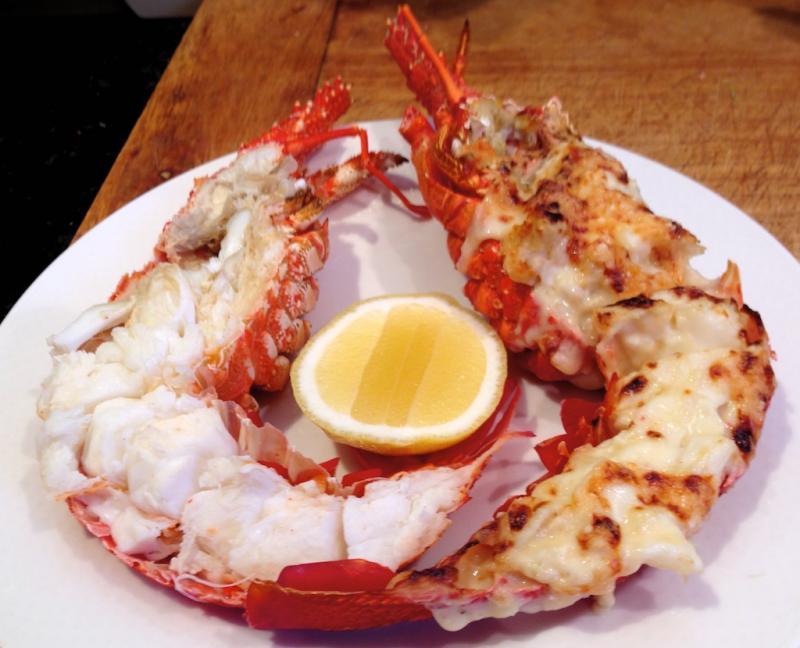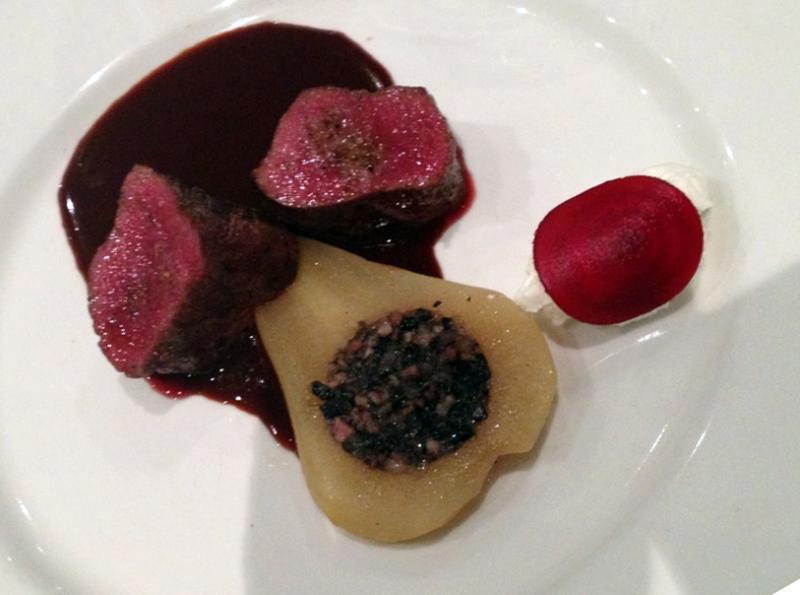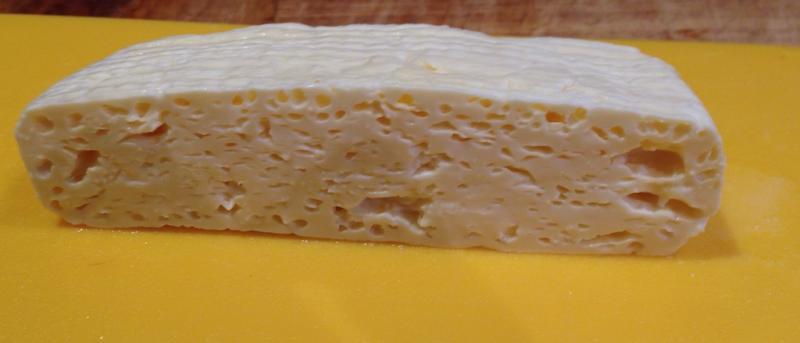-
Posts
2,606 -
Joined
-
Last visited
Content Type
Profiles
Forums
Store
Help Articles
Everything posted by nickrey
-
I just got around to pulling my first lot of Sauerkraut from my MS-Steinzeugwaren Gartopf pot. Because of other commitments, I've left it for a long time (probably twelve weeks or more) but was particular about ensuring that the well was filled with water to ensure anaerobic fermentation. The kraut was well submerged under the pottery weights and came out perfectly. It is the best sauerkraut that I've ever had and the sour/salt balance is just perfect. It matured in my garage which sits under townhouses at the back of our complex and is fairly constant in temperature (around 19-23C). As it's an acidic product with good salt content, I'm planning on vacuum sealing the kraut with some of the fermenting liquid and storing it in the refrigerator (which runs around 1C) until use. Botulism is not a factor given the high acidity and salt all the other aerobic nasties have been removed through the fermentation process. Any comments on this storage method?
-
Looking at Pedro's data, heating from 5C to 55C took 67 minutes. From -10C to 55C took 98 minutes but cooking to 54.9C took 75 minutes. This is most likely a function of the temperature of the water bath being set at the target temperature: it is not uncommon for extended time periods to be added if you don't cook at a slightly higher than target temperature. It looks like the rule add another third to cooking time if cooking from frozen works, at least in this instance.
-
Agree with all that is said on cooking from frozen. Water is a great conductive medium and the meat defrosts very quickly. If you're using your final temperature or a few degrees above, I can't see how you'd overcook the outside of the meat. Use Douglas's tables or those in sous vide dash and you will be fine.
-
This is not as silly as you think. The frozen meat will cool the water when it is added. It is also phase shifting from frozen to thawed so it will have a larger effect than would be predicted simply adding the masses and temperatures. I start off with water warmer than my target temperature then monitor the temperature after the food is added. As it drops below target temperature, which it will, I add more hot water to bring it back up. I do this by scooping out some of the water and replacing it with hot water. Once it reaches equilibrium, I leave it to heat through and then treat it as for normal sous vide cooked food.I far prefer this method of cooking to thawing in the refrigerator and then reheating. The thermal conductivity of water means that it passes quickly through the danger zone. Moreover, it is very convenient. Edited to add: I just converted your temperatures to Celsius and your temperatures are way too high. I wouldn't reheat pre-cooked food in a water bath anything above 57C (135F). You're only reheating it, not cooking from scratch.
-
I bought "cook with Jamie" by Jamie Oliver for my son. It is a UK book so you'll avoid conversions. Australian women's weekly has a beginner cookbook that would also be useful. I'd avoid US cookbooks for a young Australian beginner because of their use of imperial measurements and cups/tablespoons, etc. Save these for a broadening of perspective later.
-
Hi Franci, Yes it was a rock lobster from Tasmania (we call them crayfish). Cost for each was around 22 Euro. The natural was delicious with some lemon and a smidgin of mary-rose sauce, if desired, but so was the thermidor. It was a very subtle thermidor, not the cheesy white sauce horror that some restaurants serve. The lobster was already cooked so I sealed the half tails sous vide and heated them briefly in 50C water. I then put down some warm béchamel in the shell, topped it with the warmed and cut up meat, then more béchamel, then some grated parmesan and browned under the grill (broiler).
-
Lobster Natural, Lobster Thermidor? Lobster Thermidor, Lobster Natural. Solomon inspiration! Half of each! I love the tri-colour effect on the lemon cheek.
-
Not to mention that putting it in a fridge is going to dry out the coating. That's what fridges do.
-
That's exactly how I make my butter as well. Yoghurt culture in cream in the yoghurt maker overnight. Cool in fridge then churn. The by-product buttermilk tastes like kefir.
-

"Modernist Cuisine at Home" by Myhrvold and Bilet
nickrey replied to a topic in Cookbooks & References
Inkling on the iPad allows you to download any title that you own so, no you only have to buy it once from Inkling. -

"Modernist Cuisine at Home" by Myhrvold and Bilet
nickrey replied to a topic in Cookbooks & References
I went to log in and was unable to do so. On clicking on the forgotten password link, it said to check my email. An email never came. I contacted them directly using the email from the web site and have to praise them on a really prompt response. The app is good. For those of you who have seen the CIA professional chef book app, it is done in the same manner. -
In my cheese making course they recommended using a cake cooling rack. It works a treat.
-
I'd second Pilu at Freshwater. It is an old house with fantastic views over the ocean. Another on to consider is Ormeggio at the Spit, which is just before one of the bridges you go across on the way to Manly. Hugo's is good for pizza, etc but may have too much of a young crowd for your parents. You could also catch the ferry to Watson's Bay and have a pub lunch on the deck there. You could also go to Ripples at Milson's Point which is under the harbour bridge on the northern side and serves reasonable food with a great view. They also have an outlet at Chowder Bay, which is near the Gunner's barracks and burnt orange mentioned above. Monopole is open seven nights. No view but great food. Icebergs is also open Sunday but not Monday. If you are staying Sunday and Monday, I'd do an expedition on Sunday, perhaps to Icebergs at Bondi. On Monday you could go to Monopole or even try one of the Restaurants on Finger Wharf at Wollomoolloo such as Otto. Again, the field is wide open and if you tell us the sort of food you like, you'll get some more targeted responses. It seems view is important. Any of the above except Monopole would fit this criterion.
-
Along with the premium restaurants that you have mentioned, I'd explore Sepia and Momofuku Seibo both of which are as good, if not better, than Aria, Tetsuya and Guillaume. Bentley has opened an offshoot restaurant called Monopole which has a very good name. Icebergs at Bondi is also a premium destination. Apart from those there are so many others depending on what you want that it is hard to recommend something more specific. If you have an iPhone, I'd recommend the Sydney Morning Herald good food app as well as the Gourmet Traveller restaurant guide app. If you want to tell us what you would like to try, it will be easier to recommend things.
-
Check the temperature with a thermometer rather than using eggs or some analogue. Even with a somewhat inaccurate thermometer you will see if you are in the ballpark.
-
It's an iPhone picture taken by one of the guests so not as clear as it possibly could be. The pear has a round of bacon pannacotta topped by a duxelle of bacon, mushroom, and onion with strawberry vinegar. Recipe is in Eleven Madison Park cookbook. Daniel Humm serves it with brussels sprouts and black mushrooms. I decided to remove both these elements and add the goat's curd and beetroot. These go very well with the pear and venison respectively. Eating elements of the dish in various combinations gives a coherent whole that can change from mouthful to mouthful.
-
-

A sauce for eating with Chinese dumplings (Jiaozi)
nickrey replied to a topic in China: Cooking & Baking
For what it's worth, I've cooked Russian dumplings as well and created a sauce based on vinegar to counter the fattiness of the meat. I'm surprised that some of the replies have omitted vinegar as this is the element that seems most common in regional Chinese restaurants I've visited here in Australia. We're getting pretty good at expanding beyond Cantonese food these days and I thought I'd tried most. I know it's not China but we have a lot of recent Chinese immigrants who all bring their regional food here now that food horizons have broadened ( which is a really good thing!) -
It was this forum. I second Evernote or emailing it to yourself but with both you still need to have an ability to search to retrieve the information. So the question is not so much one of storing (which you have done with the screen shot above) as one of retrieving what you have stored. For this you need a good search engine.I gave up on the search function in eGullet a long time ago. If you know the sort of content, look it up using google site search (type "site:forums.egullet.org <search term>" into google). That's how I found the forum you mentioned (it was number two on the search list) and every other one I've tried to remember.
-
Perhaps I should elaborate on Trisol. When combined with flour in dredging products for deep frying, it gives a crispness that lasts. My understanding is that it does this by acting more like a sugar than a flour. When deep fried it gives a subtle form of caramelisation. If you extrapolate this to dredging for your form of "breading", it is much more likely to adhere to the chicken, thus forming the bond you are looking for without overcooking.
-
I use a le Creuset grill pan heated over my wok burner and sear just as I would if I were cooking a raw steak, turning to get cross hatch marks.
-
For Feta, I'd still let it drain through turning as is my normal process. Then I'll use this as a finishing process. Probably the best way to do this will be to compress without the brine a few times without sealing and remove any liquid that is expelled. Then I'd add the brine, do it again, and seal.
-
You could try dredging in Trisol. Or double cook the chicken. Steam it first so the outside gets very moist, cool, then dredge in flour then cook. There's a whole cook-off thread on fried chicken on eGullet. Many very experienced deep fryers contributed to that thread. Without seeing what you do it is impossible to work out what you are doing wrong. There have already been some great suggestions here. Buy some chicken, try them out, and let us know what worked for you.
-
It is vacuum sealed in brine. It's different from just sealing your purchased cheese. We had Greek Salad tonight so I cut some of the feta. Here is a cross section.
-
If you read Dakki's post above, he says "rest until it wets through" not "rest until it dries off." Your own words are "rest until it sets," not "rest until it dries." It is in essence making a little batter that goes crisp when it is fried (batters are wet, not dry). The process of frying cooks the wet batter (dries and crisps it) and, potentially, makes it adhere to the thing that it is coating. I'm not sure what's so difficult about that as a concept. Your method obviously doesn't work. Repeating it in the hope that the outcome will change is not likely to be productive. Why ask others if you are going to discount reasonable suggestions out of hand?





